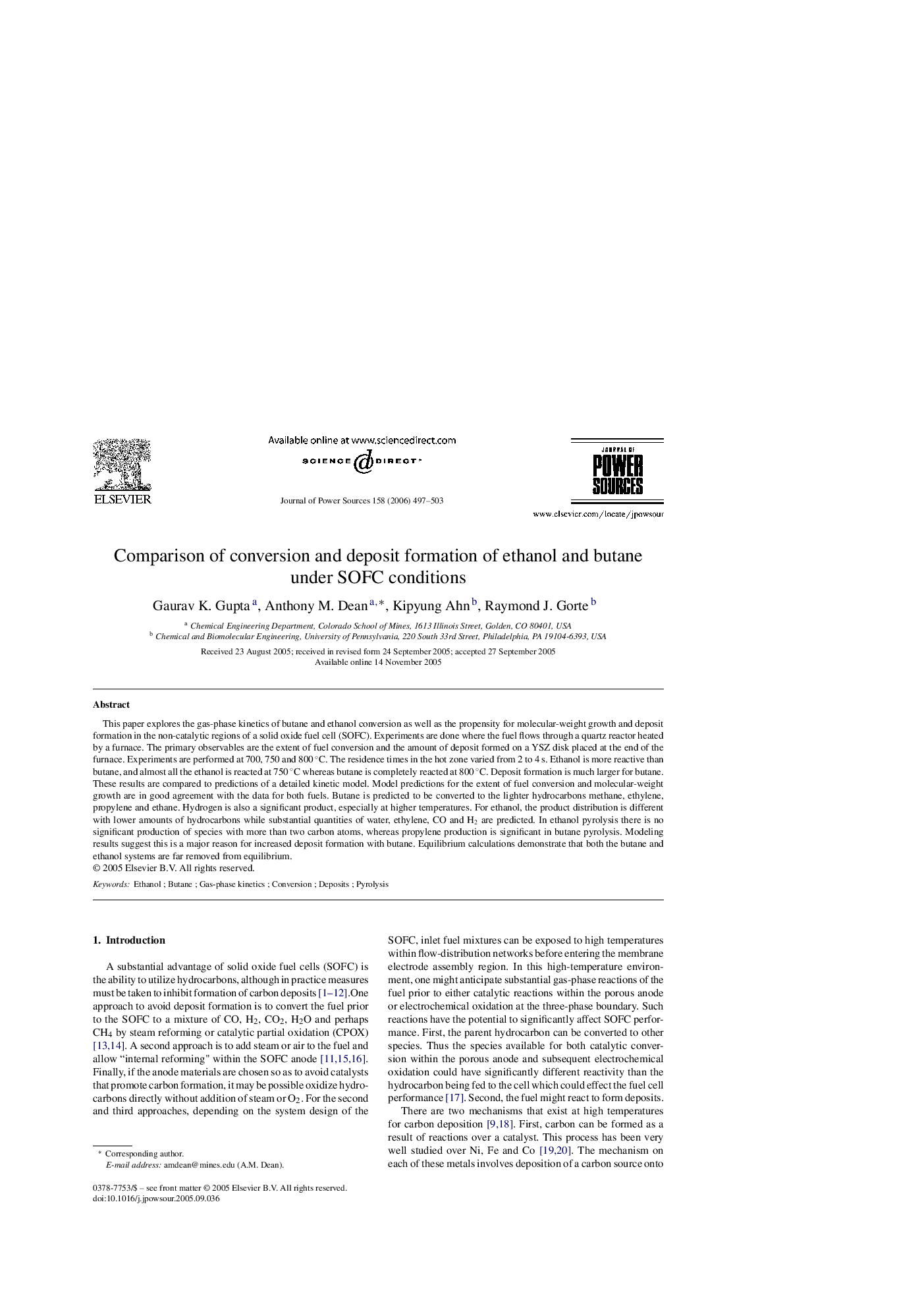| Article ID | Journal | Published Year | Pages | File Type |
|---|---|---|---|---|
| 1287593 | Journal of Power Sources | 2006 | 7 Pages |
Abstract
This paper explores the gas-phase kinetics of butane and ethanol conversion as well as the propensity for molecular-weight growth and deposit formation in the non-catalytic regions of a solid oxide fuel cell (SOFC). Experiments are done where the fuel flows through a quartz reactor heated by a furnace. The primary observables are the extent of fuel conversion and the amount of deposit formed on a YSZ disk placed at the end of the furnace. Experiments are performed at 700, 750 and 800â° C. The residence times in the hot zone varied from 2 to 4âs. Ethanol is more reactive than butane, and almost all the ethanol is reacted at 750â° C whereas butane is completely reacted at 800â° C. Deposit formation is much larger for butane. These results are compared to predictions of a detailed kinetic model. Model predictions for the extent of fuel conversion and molecular-weight growth are in good agreement with the data for both fuels. Butane is predicted to be converted to the lighter hydrocarbons methane, ethylene, propylene and ethane. Hydrogen is also a significant product, especially at higher temperatures. For ethanol, the product distribution is different with lower amounts of hydrocarbons while substantial quantities of water, ethylene, CO and H2 are predicted. In ethanol pyrolysis there is no significant production of species with more than two carbon atoms, whereas propylene production is significant in butane pyrolysis. Modeling results suggest this is a major reason for increased deposit formation with butane. Equilibrium calculations demonstrate that both the butane and ethanol systems are far removed from equilibrium.
Related Topics
Physical Sciences and Engineering
Chemistry
Electrochemistry
Authors
Gaurav K. Gupta, Anthony M. Dean, Kipyung Ahn, Raymond J. Gorte,
